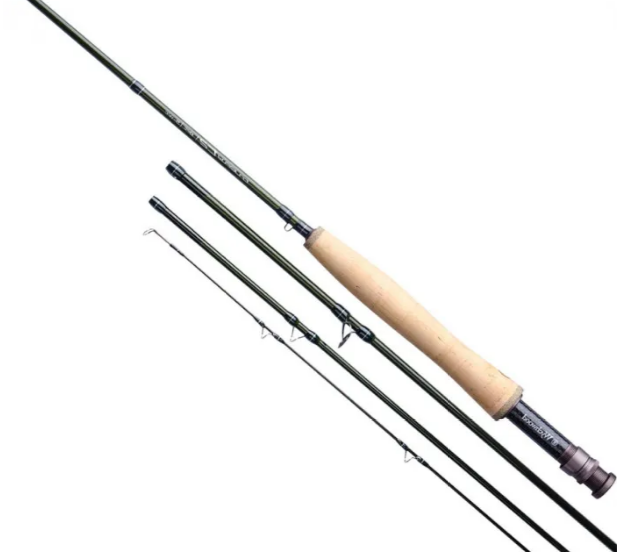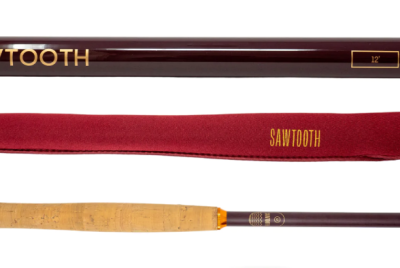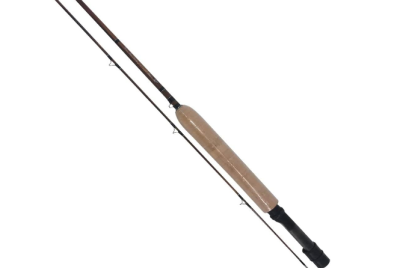Fly Fishing Rod
As an avid fly fisherman, I recognize the pivotal role a well-suited fly fishing rod plays in a successful angling experience. The perfect fly rod enhances casting accuracy, offers better control while playing fish, and elevates your overall enjoyment on the water. In this comprehensive guide, I’ll delve into the world of fly fishing rods, exploring their types, materials, actions, and more. discover the ideal rod that complements your fishing style, and embark on memorable fly fishing adventures.
Introduction to the Significance of a Well-Suited Fly Fishing Rod
A carefully chosen fly fishing rod is essential for any angler seeking success on the water. A rod that aligns with your fishing style and preferences will significantly impact your casting accuracy, presentation, and ability to land fish effectively.
Understanding the Different Components and Types of Fishing Rods
Fly fishing rods comprise several key components, including the grip, reel seat, guides, and blank. Different types of fly rods, such as single-handed and two-handed (Spey) rods, cater to diverse fishing styles and environments.
Advantages of Using a Specialized Fishing Rod
Using a fly fishing rod specifically designed for the task offers multiple advantages. Specialized rods provide superior casting accuracy, improved sensitivity to strikes, and enhanced control while playing fish.
Types of Fly Fishing Rods
Fly fishing rods come in various types, each tailored to different angling styles. Single-handed rods are versatile and commonly used in freshwater fishing, while two-handed (Spey) rods excel in spey casting techniques for large rivers. Switch rods offer a hybrid design, combining elements of both single-handed and Spey rods.
Fly Rod Materials and Construction
Fly rods are crafted from a range of materials, including graphite, fiberglass, and bamboo. The material affects the rod’s weight, flexibility, and overall performance. Understanding rod action and flex will help you select a rod that suits your casting style and fishing technique.
Rod Length and Weight Considerations
The length of a fly fishing rod impacts casting distance, line control, and fish-fighting abilities. Consider the fishing scenarios you’ll encounter to determine the appropriate rod length. Additionally, the rod’s weight rating is a crucial factor that influences casting and fish-fighting capabilities.
Fly Line and Rod Weight Compatibility
Matching the appropriate fly line weight to your fly rod is crucial for optimal performance. A well-balanced setup ensures efficient casting and a comfortable grip while fighting fish.
Determining the Best Fly Rod Action
Fly rods come in various action categories, such as fast, medium, and slow. Each action has distinct benefits, affecting casting distance, accuracy, and sensitivity. Choosing the right action for your fishing style is essential for a successful angling experience.
Different Species and Environments
Different fly rods are suited for specific fishing environments and target species. Consider the type of fish you’ll pursue and the waters you’ll fish to select the appropriate rod for the job.
Travel and Packable Fly Fishing Rods
For anglers who love to explore new waters, travel-friendly fly fishing rods are a valuable asset. These packable rods offer convenience and flexibility for anglers on the move.
Fly Fishing Rod Maintenance
Proper care and maintenance are essential for prolonging the life of your fly rod. Regular cleaning and inspections help prevent damage and ensure the rod functions optimally.
Upgrading Your Fishing Rod
As your angling skills progress, you may find yourself ready for an upgrade. Recognize the signs that it may be time to invest in a new fly rod, and explore the best upgrade options for your specific needs.
Affordable Fly Fishing Rod Options
Fly fishing doesn’t have to be an expensive endeavor. Several budget-friendly fly rods on the market offer excellent performance and value without breaking the bank.
Finding the Perfect Fishing Rod for You
Selecting the ideal fly fishing rod requires careful consideration. Testing rods, seeking expert advice, and understanding your preferences will lead you to the perfect rod that aligns with your angling style.
Conclusion: The Ideal Fishing Rod for Memorable Adventures
A well-suited fly fishing rod is a crucial investment for any angler seeking to elevate their angling experience. By understanding the components, types, materials, and actions of fly rods, you can make an informed choice that enhances your casting, presentation, and enjoyment on the water. Find the perfect rod that complements your fishing style, and embark on memorable fly fishing adventures.
FAQs
1.What length of fishing rod should I choose as a beginner?
As a beginner, a medium-length (around 8.5 to 9 feet) fly rod with a medium-fast action is generally a versatile choice. It provides good casting distance and control, suitable for various fishing scenarios.
2.What weight of rod is best for trout fishing?
For trout fishing in freshwater streams and rivers, a 4 to 6-weight fly rod is commonly used. It strikes a balance between finesse and power, allowing for delicate presentations and handling larger trout.
3.Can I use a saltwater fly rod for freshwater fishing?
While saltwater fly rods are designed to withstand harsh conditions, they can be used in freshwater environments. However, they may feel heavier and less sensitive compared to specialized freshwater fly rods.
4.How often should I clean my fishing rod?
Regular cleaning after each fishing trip is advisable. Rinse the rod with freshwater and wipe it down to remove dirt and debris. Occasional deeper cleaning is necessary to maintain its performance.
5.Can I use a fly fishing rod for other types of fishing?
Fly fishing rods are specifically designed for fly fishing techniques and may not be suitable for conventional casting with lures or bait. Using a fly rod for other types of fishing may lead to reduced performance and potential damage to the rod.



